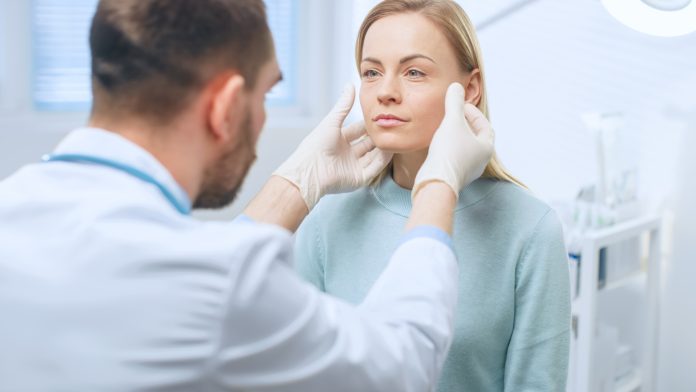In recent years, the demand for cosmetic treatments has significantly surged across all age groups, from teenagers seeking to enhance their features to seniors looking to reverse the signs of aging.
However, understanding cosmetic procedures and age restrictions can be complex. Fortunately, this article discusses the age considerations for various cosmetic treatments, offering a comprehensive guide for individuals from their teen years to seniority.
Teenage Considerations: When Is Too Young?
The discussion around teenagers and cosmetic treatments is nuanced, reflecting concerns over the impact on physical and psychological development.
Non-invasive treatments, such as acne scar removal, are widely considered appropriate for this age group, offering significant benefits to self-esteem without substantial risks. Conversely, more invasive procedures are generally deferred until the age of majority, typically 18 in many jurisdictions.
This delay allows the body to mature fully and reduces the risk of regret or harm. Exceptions exist, such as rhinoplasty for severe breathing issues or otoplasty for prominent ears, where the benefits may outweigh the risks.
In these cases, a consultation with a medical professional and psychological assessment ensures the treatment is in the teenager’s best interest, addressing both medical necessity and the individual’s emotional readiness.
The Twenties: Exploring Options With Fewer Restrictions
The twenties are a period of exploration and identity formation, with fewer physical restrictions on cosmetic treatments.
This decade is an opportune time to begin non-invasive preventative measures, such as Botox, to delay the onset of fine lines and wrinkles. Lip fillers and other augmentation procedures become more appealing as individuals seek to enhance their features.
The focus is largely on enhancement and preventive care, with an emphasis on personal choice and exploration.
However, it’s also a time when individuals are encouraged to develop a healthy relationship with their self-image, seek treatments for the right reasons and understand the importance of moderation.
Consulting with a plastic surgeon can provide valuable insights into the most appropriate and effective treatments.
The Thirties: A Time For Preemptive Care
In the thirties, the signs of aging begin to become more apparent, making this a crucial time for preemptive skincare and treatments.
Laser resurfacing, microneedling, and chemical peels are popular choices for maintaining skin health and addressing early signs of aging.
This age is about balancing corrective measures with maintenance, aiming to slow the aging process rather than reverse it. The approach is strategic, focusing on longevity and the quality of outcomes, with an emphasis on non-invasive treatments that require minimal downtime.
Forties And Fifties: Corrective Measures
The forties and fifties mark a shift towards more significant corrective measures. As the skin loses elasticity and volume and deeper wrinkles emerge, individuals may opt for more invasive procedures such as facelifts, eyelid surgeries, and other lifts to address these changes.
These treatments offer more dramatic results, targeting the underlying structures of the face and neck to create a more youthful appearance.
The decision to undergo surgery is significant and involves comprehensive consultations to ensure the individual’s goals can be realistically achieved while maintaining a natural look.
The Sixties And Beyond: Safety First
Safety is the overriding concern in the sixties and beyond. While the desire for cosmetic enhancement may persist, the body’s ability to recover from invasive procedures diminishes.
Health assessments become more stringent, with a focus on understanding the individual’s medical history, current health status, and potential risks.
Non-invasive treatments that stimulate collagen production, improve skin texture and address minor sagging are preferred, balancing the desire for aesthetic improvement with the need for caution.
Legal And Ethical Considerations
Legal and ethical considerations are pivotal in governing the domain of cosmetic treatments, creating a safe and responsible environment for both practitioners and recipients.
Consent laws play a critical role, especially for minors, requiring parental or guardian approval for those under the age of consent.
These laws safeguard young individuals from potentially premature or uninformed decisions about cosmetic procedures, highlighting the importance of legal protection in sensitive medical decisions.
Beyond legality, ethical practices in cosmetic treatments emphasize the paramount importance of patient welfare, informed consent, and setting realistic expectations.
Practitioners are tasked with the delicate balance of respecting a patient’s desires while providing professional guidance on the medical advisability and potential outcomes of treatments.
This ethical framework ensures that the pursuit of cosmetic enhancements does not compromise the individual’s well-being, ensuring that all procedures are not only compliant with legal standards but also rooted in a deep commitment to the highest standards of care and patient safety.
Takeaway
Regardless of age, the decision to undergo cosmetic treatments should not be taken lightly. It is essential for individuals to conduct thorough research, consult with medical professionals, and consider their physical and emotional readiness for the procedure.
Understanding age restrictions and guidelines can help individuals make informed decisions, ensuring that they choose treatments that are safe and appropriate for their age group.
Ultimately, the goal of cosmetic treatments should be to enhance one’s natural beauty while maintaining health and safety at every stage of life.
























